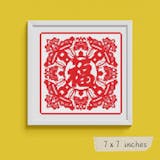Paul Ranson (2)
Paul Ranson (1864–1909) was a French painter and one of the leading figures in the Nabi movement, an avant-garde group that emerged in the late 19th century. His work, known for its bold use of color and flat, decorative style, was a significant departure from traditional academic painting and a precursor to modern art movements such as Symbolism and Art Nouveau.
Ranson was one of the founding members of the Nabi group, a collective of artists formed in the 1890s in Paris. The Nabis, which included other notable artists such as Édouard Vuillard, Pierre Bonnard, and Maurice Denis, sought to break away from Impressionism and embrace more symbolic, decorative, and abstract styles.
Like many artists of his time, Ranson was profoundly influenced by the rise of Japonisme, the fascination with Japanese art that spread through Europe in the late 19th century. He admired the flat, decorative quality of Japanese prints, particularly those by artists like Hokusai and Hiroshige.
Ranson’s life was tragically short—he died at the age of 44 from a heart attack. Despite his relatively brief career, his contributions to the Nabis and his innovative approach to art continue to be celebrated. His work remains an important part of the history of modern French art, and his influence can still be seen in the works of later artists who sought to blend symbolism, abstraction, and decorative design.








